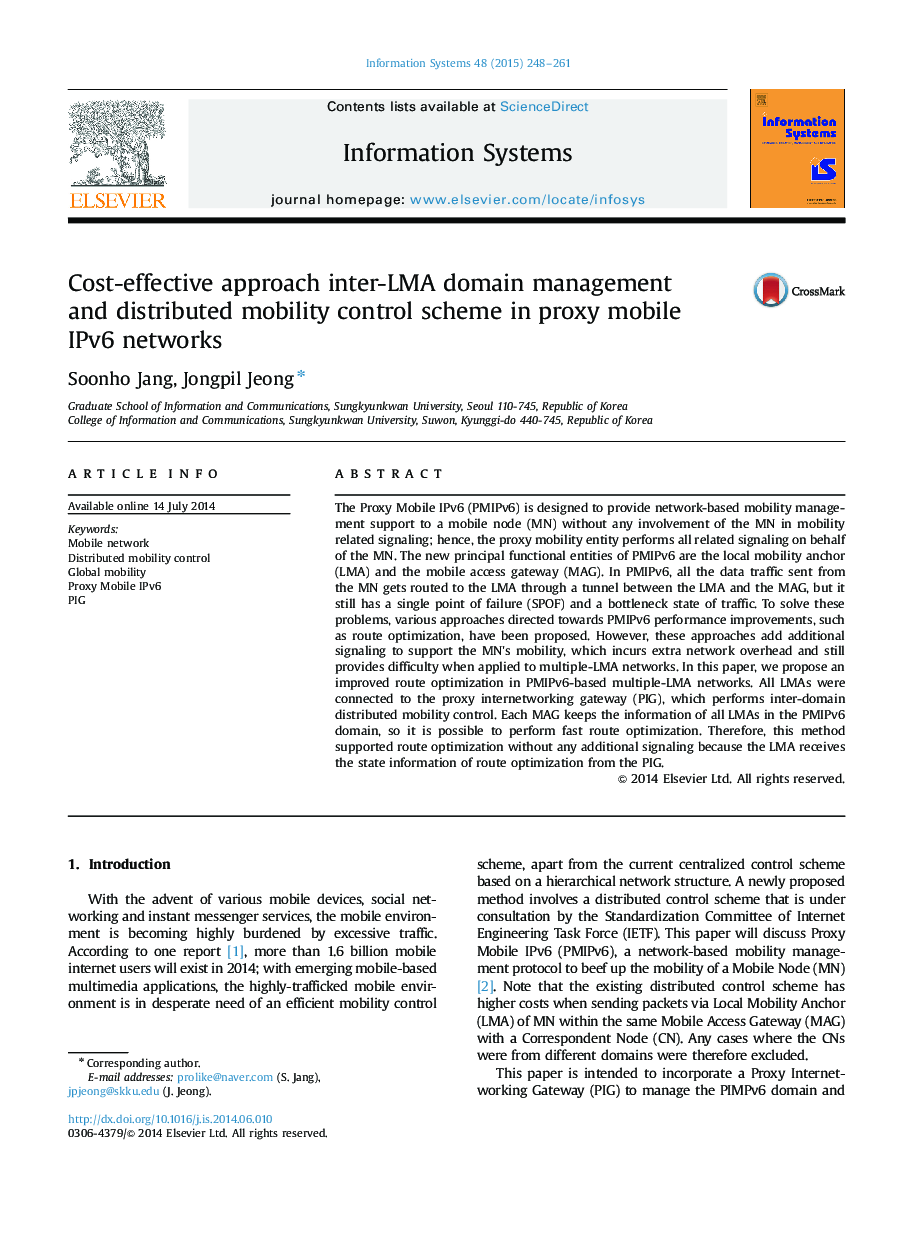| Article ID | Journal | Published Year | Pages | File Type |
|---|---|---|---|---|
| 396506 | Information Systems | 2015 | 14 Pages |
The Proxy Mobile IPv6 (PMIPv6) is designed to provide network-based mobility management support to a mobile node (MN) without any involvement of the MN in mobility related signaling; hence, the proxy mobility entity performs all related signaling on behalf of the MN. The new principal functional entities of PMIPv6 are the local mobility anchor (LMA) and the mobile access gateway (MAG). In PMIPv6, all the data traffic sent from the MN gets routed to the LMA through a tunnel between the LMA and the MAG, but it still has a single point of failure (SPOF) and a bottleneck state of traffic. To solve these problems, various approaches directed towards PMIPv6 performance improvements, such as route optimization, have been proposed. However, these approaches add additional signaling to support the MN׳s mobility, which incurs extra network overhead and still provides difficulty when applied to multiple-LMA networks. In this paper, we propose an improved route optimization in PMIPv6-based multiple-LMA networks. All LMAs were connected to the proxy internetworking gateway (PIG), which performs inter-domain distributed mobility control. Each MAG keeps the information of all LMAs in the PMIPv6 domain, so it is possible to perform fast route optimization. Therefore, this method supported route optimization without any additional signaling because the LMA receives the state information of route optimization from the PIG.
